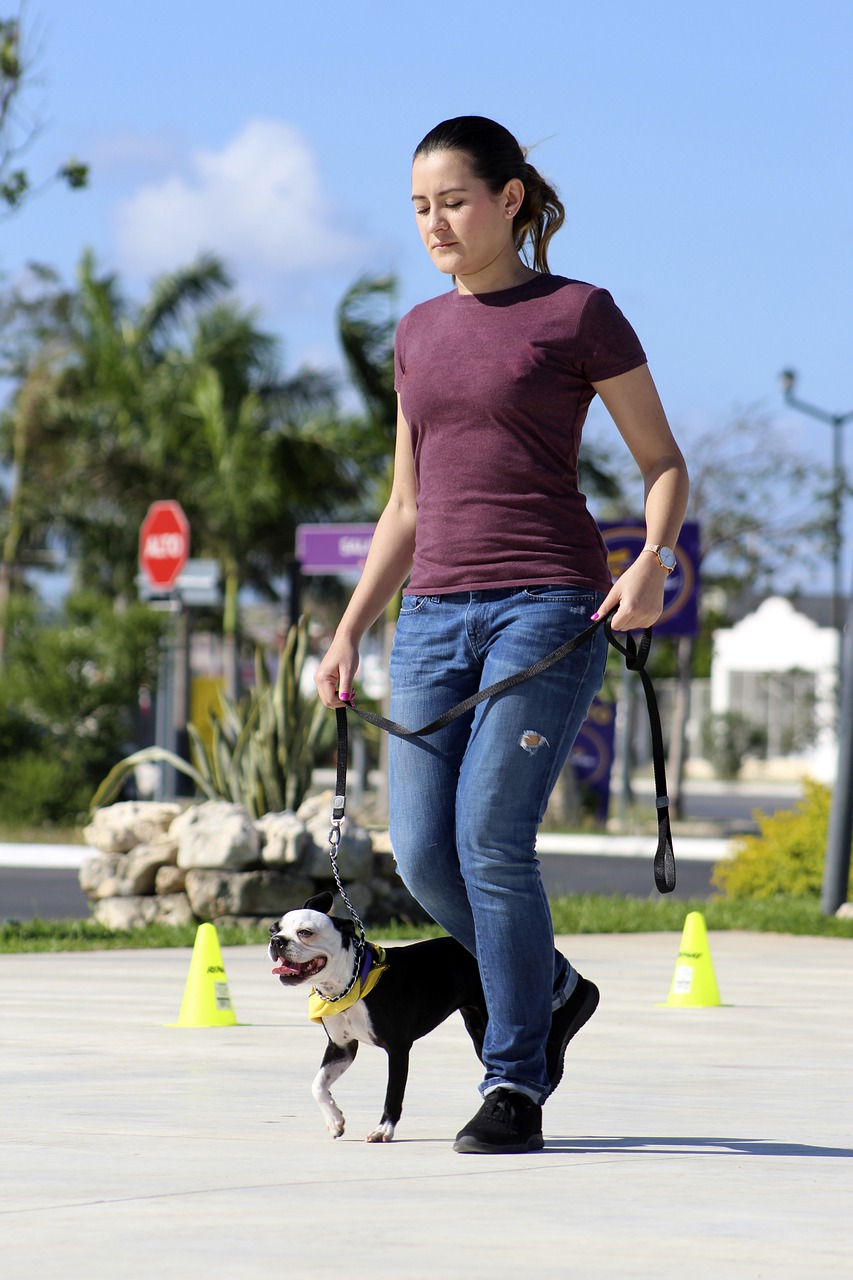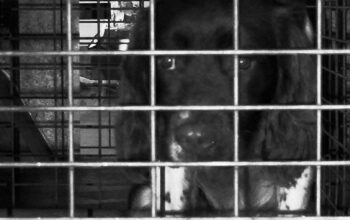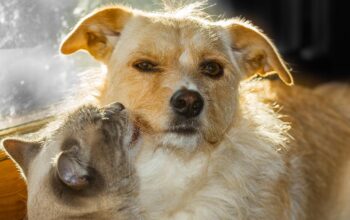Getting started with training your dog can be a challenge. There are many different ways to train your dog, and it can be difficult to know where to start. It is important that you understand the basics of dog training before you begin, so that you can avoid common mistakes and ensure that your dog is learning properly. This section should provide some general information about how to get started with training your dog. You may want to include some tips on choosing a trainer or learning from books or videos, as well as explaining the importance of choosing a positive approach for training your dog. The next part of this article will focus on teaching basic commands: There are many different commands that you can teach your dog, but it is important that you start with the basics first. The most basic commands are sit, stay and come. These three commands will help keep your dog safe while also making sure he doesn’t get into trouble around other people or animals in public places. You should begin by teaching these three basic commands one at a time before moving on to more advanced commands such as roll over or shake hands. If you have multiple dogs in the house, make sure they all learn these same basic commands so they don’t end up fighting over who gets what command first! It is also important not to move too quickly when teaching these basic commands; if you do not take enough time between each step in the process then your dog may become confused and forget what he has learned previously!
House Training and Crate Training
House Training When you first bring your puppy home, it is important to keep him confined to a small area. This will allow him to get used to his new surroundings and make it easier for you to monitor his behavior. When he goes potty in the right place, praise him and give him a treat. This will help your puppy learn what he should do in order to earn praise from you. It is also important that you clean up after your puppy every time he goes potty in the wrong place so that he learns what not to do. You can use a spray bottle filled with water or vinegar and water when your puppy has an accident on the floor or carpet. This will startle him and let him know that this behavior is not acceptable. Crate Training A crate is an excellent tool for house training because it allows you to confine your dog while still allowing them freedom of movement within their own space. A crate should be large enough for your dog to stand up, turn around, lie down, and stretch out comfortably but no larger than necessary as this can cause anxiety for some dogs if they feel trapped inside of their crate. When first introducing the crate, put some treats inside along with some toys or other items that are familiar and comforting for your dog so that they feel comfortable going into their new space at first without being forced into it by being shut inside of it by themselves until they are ready on their own accord. If possible, leave the door open at first so that they can go in and out freely until they get used to going into their crate voluntarily on their own accord when told “crate” or “kennel” (or whatever word you choose). Once they are comfortable going into the crate voluntarily on their own accord then begin closing them in there with the door closed while leaving them alone only long enough for them go potty outside before letting them out again so that they learn how long this process takes before being let back out again (if possible use a stopwatch or timer app on your phone). Continue doing this until they are able then hold off longer periods of time between letting them out again before letting them back out again until eventually they can hold it all night long without having any accidents overnight once trained properly during daytime hours when left alone at home while you are away from home during daytime hours at work/school/etc… The goal here is consistency: Be consistent about when you take her outside.
Leash Training your dog
The most important thing to remember when training your dog is that you are the leader. This means that you must be the one in control of all situations. Your dog will learn to respect you and your authority over him if you are consistent and firm with him. There are several ways to train your dog to walk on a leash. The first thing that you should do is purchase a leash and collar for your dog. These items can be purchased at any pet store or even at some department stores, such as Wal-Mart or Target. You will also need treats for training purposes, but it is best not to use human food because it can make your dog sick if he eats too much of it. It is important that you start training early on in life so that your puppy will be well behaved as an adult dog. Start by taking the collar and putting it around his neck without attaching the leash yet. Let him get used to wearing the collar by letting him wear it around for a few minutes before trying anything else out with him on the leash outside of his crate or pen area where he has been staying since he was brought home from the breeder’s house or shelter. Once he seems comfortable with wearing his collar, attach his leash and take him outside into an open area where there aren’t many distractions for either of you while working on this part of his training program. Now take hold of both ends of the leash in one hand while offering treats from your other hand so that he can get used to walking next to you without pulling ahead towards something else interesting in front of him like another animal, person, car, etc… If he pulls ahead away from you, just stop walking until he comes back towards where you are standing waiting for him before continuing again after giving him a treat as a reward for doing what was asked of him correctly this time around instead of pulling ahead away from where ever it was that he wanted to go instead! Keep repeating this process until both ends are held firmly in one hand with no slack in between them while offering treats each time so that they can learn how much better things are when they follow directions correctly rather than trying their own way which may not always work out very well! Once they have learned how good things feel when they do what is asked correctly instead pulling ahead away from where ever they want to go off towards instead each time then continue by taking them further away from their home base so there.
How to socialize your dog
The best way to socialize your dog is to take it with you everywhere. It will get used to different people, places and situations. If you want your dog to be friendly with other dogs, you should take it for a walk in the park or a pet store. The dog will see other dogs and learn how to behave around them. It is also important that you teach your dog not to bite or jump on people when they are walking by. You can do this by teaching it the “leave it” command. This part of the article focuses on the importance of socializing your dog and gives some examples of how to do so: Make sure that your puppy gets used to being around people at an early age. Take him/her out for walks and let him/her play with other puppies and children. This will help him/her get used to different situations, which will make life easier for both of you later on! Socializing is very important if you want your puppy or adult dog not only be friendly but also safe around strangers! I would recommend reading this article in full because there are many great tips about training a puppy as well as information about how much exercise he/she needs per day, what food he/she should eat etc…
Clicker training for your dog
The clicker is a training tool that you can use to communicate with your dog. It is a plastic box that makes a clicking sound when you press it. The clicker helps your dog understand what you want him to do. You can use the clicker to teach your dog new tricks and behaviors, and it will help you in the process of teaching him how to walk on a leash. When using the clicker, always make sure that your dog knows what he is supposed to do before you give him any kind of treat or reward. When he does something right, give him the treat or reward immediately after he does it. This will help him learn faster and better than if he had no idea what was expected of him. If you are using the clicker for training purposes, make sure that there are no distractions around when doing so. If there are distractions around, then try practicing without them first before trying again with them present in order to ensure success for both yourself and your dog during training sessions.
Basic commands and fun tricks for dogs
- Sit
- Down
- Stay
- Come when called (a.k.a. recall)
- Speak (or bark) on command (for dogs that can do this)
Proofing behaviors for your dog
Proofing Behaviors for Your Dog In the previous part of this article, we discussed the first six parts of a training plan. Now we will focus on proofing behaviors for your dog. This is a process that will take time and patience, but it is well worth it in the end. You want to make sure that your dog can perform all of his or her behaviors with little or no mistakes. This is not only important when you are teaching new behaviors, but also when you are teaching old ones. For example, if you have taught your dog to sit on command and he sits every time except when he sees another dog or person, then he has not been proofed well enough. The following steps will help you with this process: First and foremost, be patient! It takes time to proof behaviors and it takes even more time if you have never done so before. If you try to rush through this process without taking your time, then there is a good chance that your dog will start making mistakes in his or her behavior because they are being asked too much at once. Be patient with yourself as well as with your dog! Start out by practicing each behavior separately before combining them together into one exercise (see below). For example, if you want to teach your dog how to go down on command while staying on leash (this can be used for going down stairs), then practice just going down on command without having him stay at first; once he has mastered that skill then add in the stay; finally add in the “down” command while walking forward (you may need to start out slow at first). Do not get frustrated if your dog makes mistakes during these exercises; instead correct him/her immediately so they do not get into bad habits! Once each behavior has been practiced separately over several days/weeks/months depending upon how long it takes for them to master each skill), then combine them together into one exercise (i.e., go down stairs while staying on leash). Make sure that there are no distractions around such as other dogs or people walking by because this could cause problems during training (i.e., when they see another person walk by they may want to go say hello instead of doing what they were told). Once all of these exercises have been combined together successfully over several days/weeks/months depending upon how long it takes for them to master each skill), then try practicing these exercises outside where there are distractions.
Conclusion
Remember that training is an ongoing process.
You should be working on training your dog all the time. You should not just train your dog when you want to show him off in a competition or when you want to go for a walk. It is important that you work on training your dog all the time so that he will learn what is expected of him and how to behave properly. You should not just train your dog when you want to show him off in a competition or when you want to go for a walk. It is important that you work on training your dog all the time so that he will learn what is expected of him and how to behave properly. Always remember that dogs are individuals, just like people are individuals. Just because one method works with one dog does not mean it will work with another dog, even if they are the same breed and have similar personalities. If something does not seem to be working, try something else instead of sticking with it and hoping it will work eventually. Just because one method works with one dog does not mean it will work with another dog, even if they are the same breed and have similar personalities. If something does not seem to be working, try something else instead of sticking with it and hoping it will work eventually. Always remember that there is no such thing as an unbreakable rule in training dogs . Dogs can be trained by anyone who knows what they are doing, but there is no such thing as an unbreakable rule in training dogs . Dogs can sometimes do things differently than what was expected of them during their training sessions; this means they need more attention from their owners so they can get back on track again as soon as possible before any problems arise between them and their owners or other people around them who may take offense at their behavior due to lack of proper training from their owners who did not know how best to train them correctly in order for them to behave properly around other people without causing any problems between themselves and others around them due to improper behavior during interactions between themselves and others around them during interactions between themselves and others around them while interacting with others while interacting with others during interactions between themselves while interacting among themselves among themselves among each other among each other among each other while interacting among each other while interacting among each other while interacting among each other while interacting among each other while interacting among each other.



